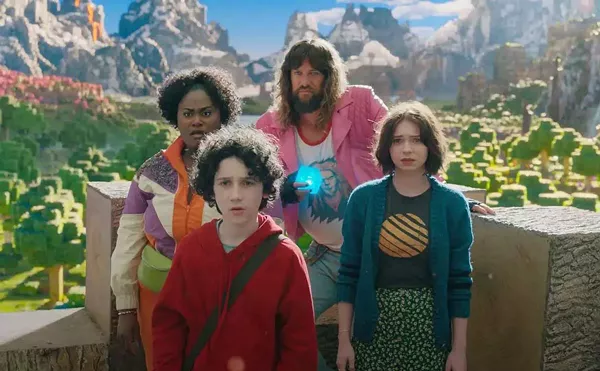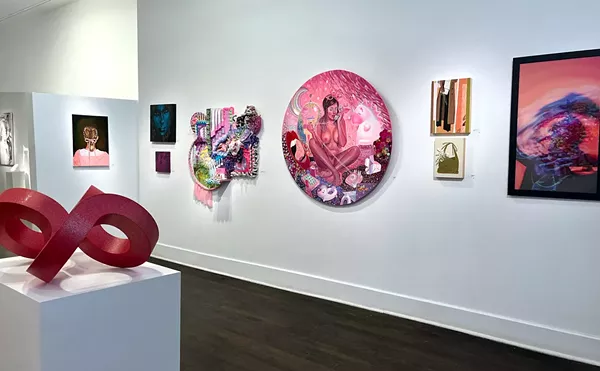
Audio By Carbonatix
[
{
"name": "GPT - Leaderboard - Inline - Content",
"component": "35519556",
"insertPoint": "5th",
"startingPoint": "3",
"requiredCountToDisplay": "3",
"maxInsertions": 100,
"adList": [
{
"adPreset": "LeaderboardInline"
}
]
}
]
Stray Dog (1949) was the third collaboration between director Akira Kurosawa and actor Toshiro Mifune. Like their first, the previous year's Drunken Angel, it's a neo-realist take on the noir topic of low-life ambiguity.
The story itself is pretty straightforward. A young detective named Murakami (Mifune) has his gun stolen by a pickpocket while riding a crowded streetcar on a sweltering summer day. Aside from the shame he feels about his carelessness, Murakami is worried that the gun, a valuable commodity on the black market, will be used to commit the sort of violent crimes that he has dedicated himself to preventing. When the gun is used in a robbery and a young woman is wounded, and then later another woman is killed, his guilt becomes almost more than he can bear.
This aspect of the story is particular to its place and time, to postwar occupied Japan. Murakami was a soldier during the war and, when he first loses his gun, his habit of submitting himself to absolute authority kicks in. "I am ready for my punishment!" he announces stoically to a superior who replies, "Stop saying that. This isn't the army." But Murakami can't shake his feeling of responsibility for how the gun is going to be used; he’s possessed of a sort of war-warped sensitivity that makes him an anomaly among his more experienced co-workers.
The difference between this Young Turk and the more seasoned cops becomes apparent when he's assigned to work on the case of the missing gun with a 25-year veteran of the force, Chief Inspector Sato (Takashi Shimura, another Kurosawa regular, who also played the dissipated doctor in Drunken Angel). Sato is as cool and calm as Murakami is intense; we first see him sharing a Popsicle with a key witness, gently prodding information out of her that the younger cop's bullying approach couldn't elicit.
The interplay between the veteran and the rookie is a cop-movie cliché, but the relationship between the two here is also the coming together of two men from separate sides of an epochal divide, something that's made explicit during a scene when Sato takes Murakami home to meet his family. During a friendly sake-fueled conversation, the younger cop admits that he could have easily become a thief and murderer rather than a law enforcer, and that he feels sorry for this young punk they're pursuing, while Sato just expresses incomprehension at this après-guerre (as he calls it, referring to a term then in vogue) generation.
It's Murakami's identification with Yusa, the disturbed young man who has ended up with the stolen gun, which gives the movie a poignancy one doesn't find in the average police procedural. And which also leads to a denouement — a foot chase between cop and criminal — that’s not only one of the finest sequences in the Kurosawa canon, but in all of cinematic history. Unfortunately, discretion prevents me from going into "spoiler" details. Suffice it to say that Kurosawa's usual mastery of rapid movement (people running through foliage as the camera follows alongside is the signature image that recurs throughout his work) is deepened here. There are added cutaways that suggest loss of innocence, disorientation and the persistent beauty of nature, that backdrop through which men scrabble like crazed animals.
It all leads up to a series of blood-curling screams and, if the film has one flaw, it's that a brief coda has been tacked on, an ineffectual attempt to soften the movie's climax. But aside from that, the film proceeds at a perfect pitch, from a close-up of a panting dog under the credits through a series of perfectly realized set pieces, some of them wordless: the initial theft of the gun; a montage as Murakami wanders through the slums while undercover, trying to flush out the thief; and the final chase. Some sequences — such as the attempt to capture a hood in a crowded baseball stadium, or Yusa closing in on an oblivious Sato — are imbued with a subtle Hitchcockian suspense.
Stray Dog (the title refers to both Yusa and the stolen gun) is a rarely seen film but essential viewing for anyone with the slightest interest in Kurosawa, or world cinema, or just solid entertainment with serious overtones. It’s also a powerful reminder that the samurai genre was only one area where this justly celebrated director's genius flourished.
Showing exclusively at the Detroit Film Theatre (inside the DIA, 5200 Woodward Ave., Detroit), Monday at 7:30 p.m. Call 313-833-3237.





